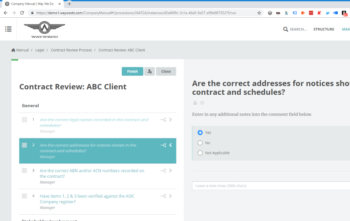A common thread in business leaders’ conversations lately has been their struggles to find workers qualified to fill their businesses’ needs. This skills shortage is impacting every industry and is happening around the world. The consequences of not having enough of the right people on staff can harm businesses in myriad ways, including:
- having to reduce operating hours
- having to scale back operations
- losing opportunities from existing and prospective customers
- having to close their doors permanently.
It’s harder to find skilled people today than it was even five years ago. The reasons for this include the changing business landscape, with digital transformations opening the market to an international competition for talent. Ever more pressing security threats and increasing customer expectations create the mandate for staff with more expertise. Add to this the widespread pandemic-induced border closures which mean less immigration, and some workers decisions to take government benefits to stay home rather than remain connected with their employer.
Mix in supply-chain shortages and you have a perfect storm for making any business owner or manager feel out of control. All these pressures are on top of a manager’s already heavy load. like any challenge, the only way out is to lean into the problem. But fear not! We’re here to help.
Here are three simple ways to manage a skills shortage and build a pipeline of qualified workers.
1. Create a skills framework to understand your organization’s skills shortage
A skills framework is unique to every organization. Make sure yours reflects your business’s needs, its strategic objectives, and its core competencies. It’s important to understand what skills you need to deliver your products and services successfully in the market place. You also need to know which skills your team already has, and to what level. This will help you clearly identify what gaps there are in your skills base.
If you don’t already have a skills framework, here are some points to get you started.
- Carry out a skills audit and gap assessment. This starts with understanding the roles in your organization and the capabilities each person must have to fulfil each job’s requirements. Listing the tasks and responsibilities of each job is a good starting point to understand the key skills needed to get the result you need.
- Develop a skills measurement system. This will define the level of skill each role needs, and how your current employees rank.
- Have your employees complete a self-appraisal of their current skills. Evaluate your team members yourself, or have their managers do it, then compare the results.
2. Train your current staff
Once you and your managers have defined the skills you need and how your employees rate against that list, you can target your immediate skills shortages with training.
One way to provide internal training is to document procedures and processes for team, then deliver your training based around those work instructions. You can deliver training in a formal setting, for example, an annual two-day program, or on the job. Whichever method you use, it’s important to reinforce any learning with regular communication to your staff through meetings, newsletters, and other internal channels.
You may identify a need for external training to boost particular skills. If you do go down this path, make sure any new knowledge is effectively leveraged by incorporating it into new processes and procedures, or by modifying existing ones. If you’re not careful to embed new learning into your existing practices, your staff will only retain a small amount of knowledge and your investment will have little impact.
3. Standardise your products and processes
Rather than relying on the expertise of a handful of highly talented people in your business, standardizing your products and services, and the processes and procedures that support them can help democratize your operations. This can open up more tasks to be carried out by people with lower levels of technical expertise. You are essentially simplifying the job being done, while still ensuring the high quality outcomes you provide to your customers. In turn, this reduces your need to find highly experienced experts in certain fields (and the salaries that come with them).
Following in that vein, consider hiring people who may not have the complete level of skills you need. With your products and services standardized, and documented procedures in place, you may be able to consider someone with only 80% of the skills, or someone who has all the skills at a lower level who can then grow into the role.
If you don’t have the expertise in your business to standardize products and services, bring in some short-term specialist assistance who can help you standardize your product and service offerings, and document processes, procedures and training at the same time. This will streamline your onboarding and upskilling processes for your new and existing employees.
A final note: Bringing in the experts
At Way We Do, we firmly believe adding an HR professional to your team, when combined with product and process standardization, will not only solve your skill shortages, but will also help you grow and scale your business. Your HR guru can be full time, part time, or an external consultant, as your business needs.
And remember, not all HR experts are created equally, and it’s important to find the right person for your team. Many HR professionals focus primarily on compliance. You’ll need an HR professional who will understand you company’s strategic intent, how this aligns with your standardization efforts, and the skills you need to meet these objectives. This may mean finding a specialist in product and process development to work alongside your HR professional, or that you start with standardization as a body of work.





